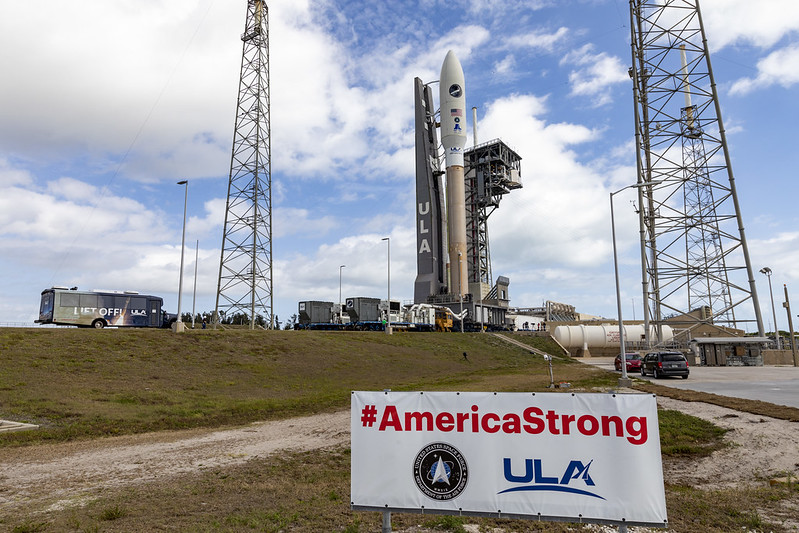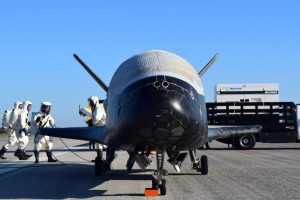
May 16,2020 update: Due to weather conditions, the May 16 launch attempt has been scrubbed. ULA plans to try to launch again on Sunday, May 17, 2020 at 9:14am ET.
While the military has been busy in recent weeks performing fly-overs over medical facilities and communities battling the COVID-19 Pandemic, a planned salute tomorrow is truly going to be “out of this world.” The United Launch Alliance (ULA) is set to launch their Atlas V rocket tomorrow morning from the Florida Space Coast, carrying a secretive “space plane” into space at 8:24am ET. In collaboration with the U.S. Space Force and Air Force, this mission has been dedicated in honor of the front-line workers and those affected by COVID-19.
While a mix of military aircraft have been used across the United States from Hawaii to New Jersey as part of a multi-branch endeavor to thank those fighting the pandemic, this is the only rocket launch to do the same. And while military craft has been buzzing over towns across America, this rocket won’t: after leaving the launch pad at Space Launch Complex-41 at the Cape Canaveral Air Force Station, it’ll soar up and over the Atlantic Ocean, bringing the USSF-7 mission to space.

The USSF-7 mission is anchored by the U.S. Air Force’s reusable X-37B space plane, an unpiloted mini-space shuttle that’s believed to be carrying military and NASA experiments. Also known as the Orbital Test Vehicle (OTV), the X-37B is boosted into space by a launch vehicle, then re-enters Earth’s atmosphere and lands as a spaceplane. The X-37 is operated by the United States Space Force for orbital spaceflight missions intended to demonstrate reusable space technologies. The X-37 began as a NASA project in 1999, before being transferred to the U.S. Department of Defense in 2004. Three years ago, the X-37B touched-down in Florida after cruising over the Earth for more than 2 years. The X-37 is roughly 25% the size of a space shuttle.
While not much is known about this USSF-7 mission, it is public knowledge that on this mission, the X-37B will deploy the FalconSAT-8 satellite. This satellite was developed by cadets and faculty at the U.S. Air Force Academy. While the X-37B has some public-facing experiments or missions on-board, much of it is classified.
Weatherboy asked Tory Bruno, the CEO of ULA, if he had any special remarks for the first-line workers being dedicated by the launch. Bruno responded, “Thank you for your courage in caring for the sick and keeping us safe. There are still heroes in this world…”
While the launch is currently “go” for tomorrow, weather could delay it. According to the latest launch forecast summary, there’s a 60% chance that weather constraints for the launch would be violated, with ground winds and nearby cumulus clouds possible obstacles to an on-time launch. If weather delayed the launch, they would try again 24 hours later on Sunday morning; the weather becomes 80% favorable for launch then.
While the COVID-19 pandemic prevents people from viewing the launch outdoors in groups, including at the now-closed Kennedy Space Center Visitor Center, ULA plans to webcast the launch on their website at http://www.ulalaunch.com/.
ULA, in partnership with the @SpaceForceDoD and @usairforce, is dedicating the #USSF7 launch to all those affected by #COVID19. A written dedication is affixed to the #AtlasV rocket’s payload fairing #AmericaStrong pic.twitter.com/6VVTHH0R3v
— ULA (@ulalaunch) May 15, 2020